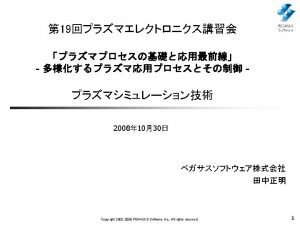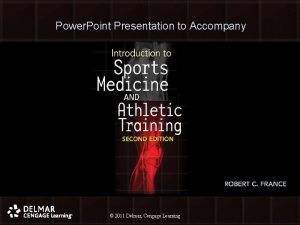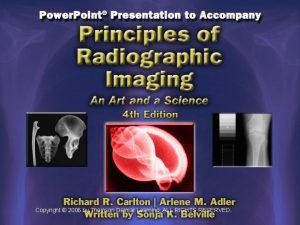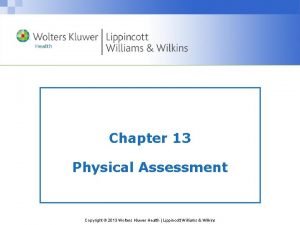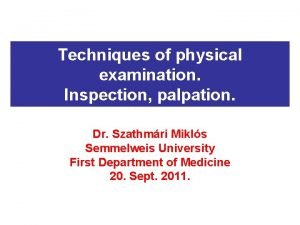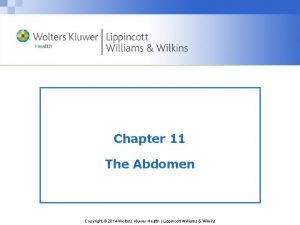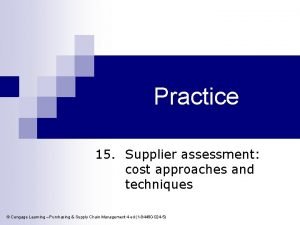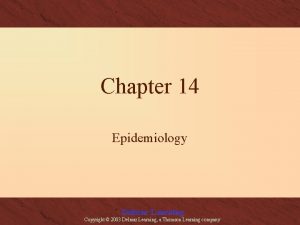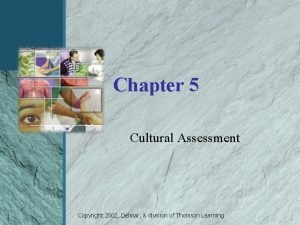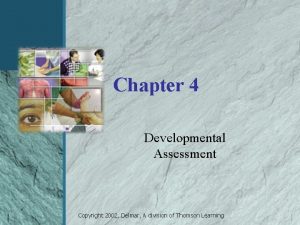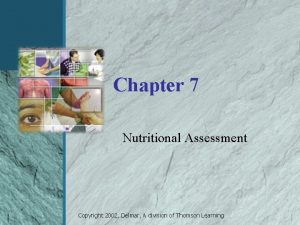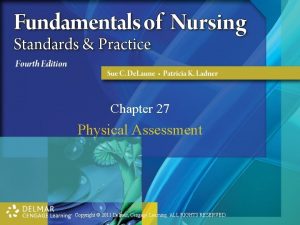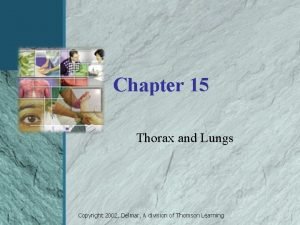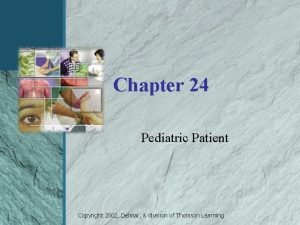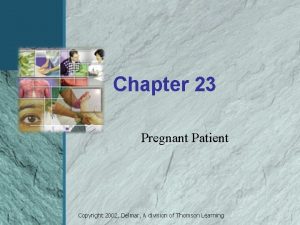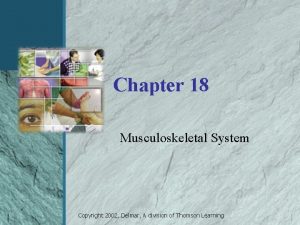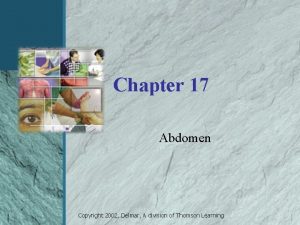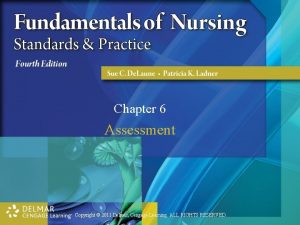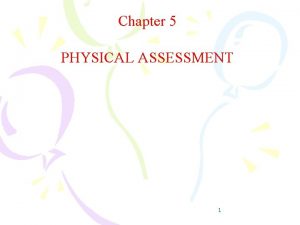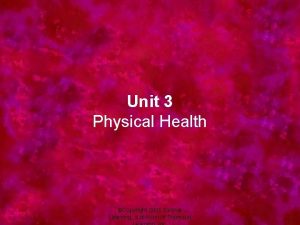Chapter 8 Physical Assessment Techniques Copyright 2002 Delmar























- Slides: 23

Chapter 8 Physical Assessment Techniques Copyright 2002, Delmar, A division of Thomson Learning

Competencies l l Describe how to maintain standard precautions during physical assessment. Describe how to perform inspection, palpation, percussion, auscultation, and which areas of the body are assessed with each technique. (continues) Copyright 2002, Delmar, A division of Thomson Learning

Competencies l l Establish an environment suitable for conducting a physical assessment. Demonstrate inspection, palpation, percussion, and auscultation in the clinical setting. Copyright 2002, Delmar, A division of Thomson Learning

Aspects of Physical Assessment l Purposes of physical assessment Screening of general well-being £ Validation of complaints that caused the patient to seek health care £ Monitoring of current health problems £ Formulation of diagnoses and treatments £ Copyright 2002, Delmar, A division of Thomson Learning

Role of the Nurse l l l Comprehensive physical assessment vs. Focused physical assessment Utilize standard precautions during assessment Legal issues Accurate, complete documentation £ Ensure patient is properly informed of assessment procedures £ Copyright 2002, Delmar, A division of Thomson Learning

Assessment Techniques l l l Inspection (I) Palpation (P) Percussion (P) Auscultation (A) Usually follow order IPPA, except for the abdomen (IAPP) Copyright 2002, Delmar, A division of Thomson Learning

Inspection l l Use of one’s senses of vision and smell to consciously observe the patient Careful observation Copyright 2002, Delmar, A division of Thomson Learning

Palpation l l Act of touching the patient in a therapeutic manner Light palpation £ £ Superficial, delicate, gentle Uses finger pads Depress 1 cm below surface Provides information on skin texture, moisture, masses, fluid, muscle guarding, and tenderness (continues) Copyright 2002, Delmar, A division of Thomson Learning

Palpation l l l Deep palpation Provide information about the position of organs, masses, their size, shape, mobility and consistency Uses hands Depress 4 to 5 cm below skin surface Most commonly used for assessing abdominal and reproductive structures (continues) Copyright 2002, Delmar, A division of Thomson Learning

Palpation l Tips Warm hands £ Short nails £ Inform patient of when, where, and how the touch will occur £ Copyright 2002, Delmar, A division of Thomson Learning

Percussion l l Striking one object against another to cause vibrations that produce sound Analyze sounds by intensity, duration, pitch Any part of the body can be percussed Most commonly used for abdomen and thorax Copyright 2002, Delmar, A division of Thomson Learning

Quality of Sounds l l l Flatness Dullness Resonance Hyperresonance Tympany Copyright 2002, Delmar, A division of Thomson Learning

Percussion l Techniques Immediate £ Mediate or indirect £ Direct fist £ Indirect fist £ Copyright 2002, Delmar, A division of Thomson Learning

Auscultation l l Act of active listening to body organs Listening to voluntary and involuntary sounds Quiet environment is needed to perform Analyze sounds in relation to intensity, pitch, duration, quality, and location Copyright 2002, Delmar, A division of Thomson Learning

Types of Auscultation l Direct or immediate £ l Listening with the unaided ear Indirect or mediate Listening with an amplication device £ Examples: stethoscope, doppler £ Copyright 2002, Delmar, A division of Thomson Learning

Commonly Used Equipment l l l l Pen and paper Tape measure Clean gloves Penlight Scale Thermometer Sphygmomanometer (continues) Copyright 2002, Delmar, A division of Thomson Learning

Commonly Used Equipment l l l l Stethoscope Otoscope Opthalmoscope Visual acuity charts Tuning fork Reflex hammer Lubricant Copyright 2002, Delmar, A division of Thomson Learning

Preparing for a Physical Assessment l l l l Clean, professional dress Proper identification Introduce self Well-lit, warm, private, quiet room Short fingernails Warm hands and equipment Prevent hair or jewelry from interfering with the exam (continues) Explain exam Copyright 2002, Delmar, A division of Thomson Learning

Preparing for a Physical Assessment l l Dress patient in gown, drape, and underpants Have patient void prior to assessment Wash hands Adhere to standard precautions (continues) Copyright 2002, Delmar, A division of Thomson Learning

Preparing for a Physical Assessment l l l Position patient as needed Avoid negative or crude remarks Be cognizant of facial expressions Perform exam in head-to-toe or other systematic manner Thank the patient when exam is concluded Thoroughly document findings Copyright 2002, Delmar, A division of Thomson Learning

Positioning for Physical Exam l Fowler’s £ l Used to assess skin, head, neck, eyes, ears, nose, mouth, throat, thorax, lungs, heart, peripheral vasculature, neurological system Horizontal recumbent £ Used to assess breasts, heart, peripheral vasculature, abdomen, musculoskeletal system (continues) Copyright 2002, Delmar, A division of Thomson Learning

Positioning for Physical Exam l Dorsal recumbent £ l Lithotomy £ l Used to assess female genitalia Knee-chest £ l Used to assess female genitalia Used to assess rectum and prostate Sims £ Used to assess rectum and female genitalia Copyright 2002, Delmar, A division of Thomson Learning

Golden Rules for Physical Assessment l l l Stand on the right side of the patient to establish a dominant side for assessment Use a head-to-toe approach Compare right to left sides of the body for symmetry Least invasive to most invasive Systematic approach Copyright 2002, Delmar, A division of Thomson Learning
 Copyright 2002
Copyright 2002 Copyright 2002
Copyright 2002 2009 delmar cengage learning
2009 delmar cengage learning 2009 delmar cengage learning
2009 delmar cengage learning Medical terminology chapter 1 learning exercises answers
Medical terminology chapter 1 learning exercises answers Graphing tpr
Graphing tpr Delmar isotonic
Delmar isotonic Delmar tsi
Delmar tsi Delmar logistics
Delmar logistics Delmar thomson learning
Delmar thomson learning Chapter 6 skeletal system
Chapter 6 skeletal system Chapter 13 medical math assignment sheet cengage learning
Chapter 13 medical math assignment sheet cengage learning Chapter 10 cultural diversity
Chapter 10 cultural diversity Delmar larsen
Delmar larsen Delmar cengage learning instructor resources
Delmar cengage learning instructor resources Copyright
Copyright Les fonctions techniques et les solutions techniques
Les fonctions techniques et les solutions techniques Physical exam abdomen
Physical exam abdomen Wolters kluwer
Wolters kluwer Tympany sound
Tympany sound Cost approaches and techniques in suppler assessment
Cost approaches and techniques in suppler assessment Chapter 10 chapter assessment chemical reactions answers
Chapter 10 chapter assessment chemical reactions answers Chapter 11 stoichiometry test answer key
Chapter 11 stoichiometry test answer key Chapter 9 chemical reactions test answers
Chapter 9 chemical reactions test answers
